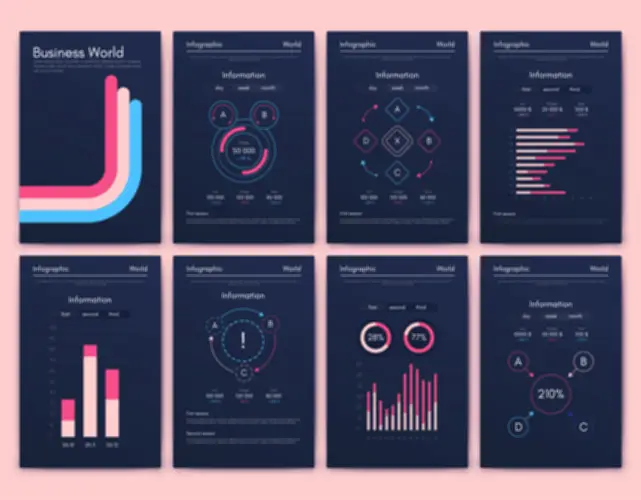Because this omnipresent cloud provides safe any-to-any connectivity along with https://www.housethehouse.org/what-is-the-future-of-smart-home-automation/ all the security features anybody could ask for, it is a perfect fit for modern organizations with broadly distributed cloud assets, remote workers, and data. These organizations not have to backhaul visitors to their knowledge centers or preserve the identical advanced, inbound and outbound stacks of safety and networking appliances (whether hardware or virtual). As a networking and security strategy, zero trust stands in stark contrast to traditional, network-centric, perimeter-based architectures built with firewalls and VPNs, which contain extreme permissions and enhance cyber risk. Given that digital belief is an abstract concept, we do have to outline it as clearly as attainable. We additionally want some technique of determining how trustworthy a company is in the digital ecosystem. ISACA has a framework to assist with that, however that is about more than a framework.

The Last Word Guide To Effective Business Communication In The Digital Age

Given the rising business impacts, digital belief is not merely a CIO or CISO problem anymore; it requires the CEO and other enterprise leaders to be engaged in technology investments now and into the future. Leaders need to be proactive, sense innovation alternatives, and make investments accordingly to weave them into their digital-trust material. This must be an ongoing activity—like a daily rhythm—to preserve and advance digital belief today and tomorrow. Trust is assured reliance on the character, capability, energy or truth of somebody or one thing. Digital belief is required in all relationships that evolve in a digital ecosystem.
Digital-trust Leaders Lose Less And Develop Extra
As a outcome, AI is being touted increasingly to fill the gap.2 If AI is involved, meaning we do have methods to mannequin or measure a vendor’s status. I do consider that belief, and especially digital trust, could be outlined and measured. We had another vendor that additionally stopped shipping orders not only on our contracts, however on some contracts for sister agencies. We determined then that it was a good idea to use a «measuring stick» based on vendor performance.
Cyberthreat And Knowledge Safety
And given cloud’s capability to enable other technologies—and, in some instances, enhance their security and effectiveness—it could be an important technology for an organization’s digital belief strategy. Despite these wide-ranging use cases, blockchain for digital belief remains to be in its early days. However, ongoing fast innovation and increasing maturity and understanding amongst stakeholders suggest that we are in a position to expect many of those limitations to be addressed within the coming years, leading to a transformative change to digital trust.
Most Companies Are Failing To Protect Against Digital Dangers
That usually carries through to conversations about identity and access administration (IAM), where verifying person identification is seen as the ideal technique of figuring out whether somebody ought to be granted entry to a useful resource. But id alone just isn’t enough—even if it entails consideration of user group. Overcoming these obstacles requires action from a senior management group or board of administrators, relying on how your organization is structured. The top three roles ISACA respondents listed as the most crucial for strengthening digital belief are related to IT strategy and governance, safety and information expertise. Companies are the stewards of digital trust not only for their own inside employees and operations, but in addition for his or her prospects, companions and extended communities. Vulnerabilities can now not be viewed as isolated issues in this new borderless world.
However, business leaders may be overlooking its influence on clients and employees, who worry about their day by day interactions with know-how as attackers constantly search for new attack surfaces. Digital trust is just likely to be granted to organisations that implement forward-looking, fashionable cyber-security methods. Future Foresight can allow long-term strategy growth by building an outside-in foundation. Starting with driving forces, trends are derived and their implications thought-about (figure 1). Unlike many conventional strategies, this process captures the complexities round us. It really helps us familiarize yourself with probably the most urgent and troublesome questions confronting companies each day.
And we completely analyze granted patents, rather than together with the patent purposes, as they’re higher indicators of really differentiated, credible innovation to observe (see appendix, “Digital trust innovation research”). Based on the maturity of those solutions, two of them seem capable of meet today’s wants. The different two are future bets for the near and long run, which can assist organizations keep forward of evolving threats for the foreseeable future. While there’s no single resolution to unravel the digital trust puzzle, AI-based monitoring, knowledge trusts, blockchain, and quantum technologies are some of the solutions that may play a valuable position. Let’s say you’ve been focused by unhealthy actors who pose as your company’s CEO and try a false transaction or knowledge breach.
Trust must be established quickly and effectively, often without direct human interaction. This evolution requires new approaches and technologies to ensure trust and safety in the digital realm. Here your viewers can depart comments, annotations, and emojis at specific times in a video.

By contemplating digital trust’s implications on long-term cyber-security methods, and what ought to issue into the development process, decision-makers and stakeholders can turn VUCA on its head. Volatility becomes vision, uncertainty becomes understanding, complexity turns into readability and ambiguity turns into agility. By analysing drivers and trends that affect the means forward for digital belief, decision-makers can proactively develop methods that allow them to deal with the more than likely challenges forward. Digital identities play a vital role in establishing trust between individuals, organizations, and digital platforms.
Going forward, in this column we are going to concentrate on that goal as we delve into issues, events and parts that affect digital trust and the digital ecosystem. Recently, I was having an analogous conversation with my organization’s third-party vendor administration personnel. They have been evaluating artificial intelligence (AI) merchandise designed to help with IT vendor risk management.
- While there’s no single resolution to resolve the digital trust puzzle, AI-based monitoring, knowledge trusts, blockchain, and quantum technologies are a number of the solutions that may play a valuable position.
- Like other frameworks, the DTEF is designed to function as scaffolding to help an organization meet certain expectations.
- First, they merely set extra goals—leaders in digital belief set twice as many goals for belief constructing (six) than all different organizations.
- Digital trust will permit prospects to search out and select the reliable digital companies quicker, better and with less unreliable decisions to distract them.
- Building on his expertise, he’s specialised in Zero Trust technique and architecture and supports clients to embark on the Zero Trust journey.
These are what they reported as the most important advantages of excessive levels of digital trust. This is a world where traditional terms, definitions, and modes of operating no longer apply to how and what we connect—which means traditional modes of safety no longer apply. You can even speak together with your KPMG consultant about digital belief and its proven benefits to organizations like yours. More than 90 digital belief professionals worldwide recently supplied feedback on the framework during a public publicity period. Those comments at the second are being addressed, and the framework will be available in Q4 2022. Digital belief use cases are countless, ranging from banking transactions to video physician visits to vote assortment.
In today’s technology-driven enterprise world, digital trust—the stage of confidence about an organization’s digital products, companies, and presence—has big implications on future business performance. Enterprises that fail to deliver digital trust aren’t likely to final long, whereas those who obtain new levels of digital belief are on a robust path towards development. Technology developments are disrupting present business fashions and providing new means of attacks.
Prior to working with Deloitte, Tim graduated with bachelor’s and master’s degrees in electrical engineering and information expertise from Technical University of Munich and labored within the area of software program development. Given this disconnection between assumption of coverage and lack thereof, it’s doubtless no shock that 57 percent of executives report that their organizations suffered at least one material data breach prior to now three years (Exhibit 3). Further, many of those breaches resulted in monetary loss (42 percent of the time), buyer attrition (38 percent), or other consequences.